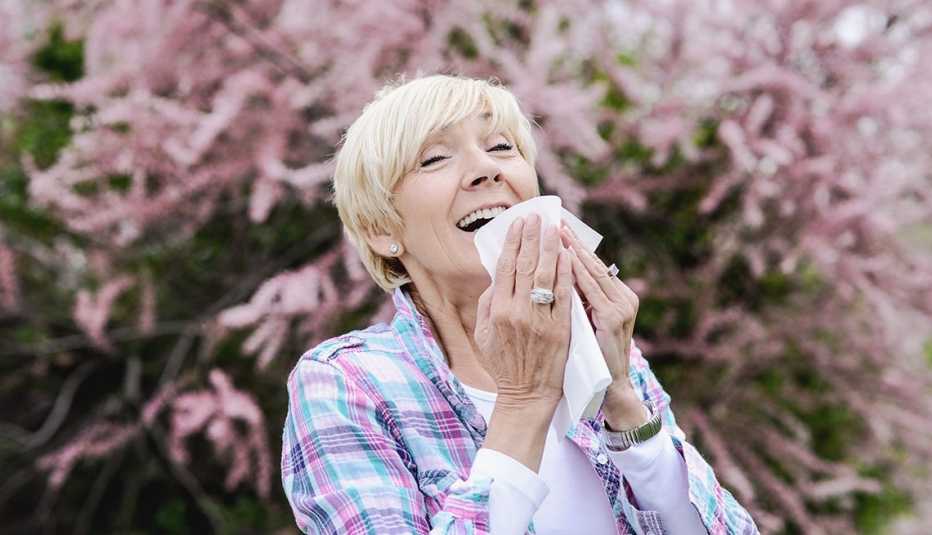Staying Fit


Yep, it’s spring. Time to lose the layers and pack away the snow shovels for another year. For some of us, though, the milder months come with their own challenge — allergies. The American College of Allergy, Asthma & Immunology estimates that each year 50 million people in the United States experience symptoms from allergies, many of them related to seasonal allergens such as pollen. Pollen-packed days can do a number on our breathing, leaving noses dripping, sinuses congested and lungs begging for mercy. But eyes can also feel the discomfort, with symptoms that include redness, itchiness, swelling and watery discharge.
Making things worse: the trend toward warmer temperatures year-round. That means pollen seasons start sooner and last longer. A 2014 Rutgers University study found that between 2001 and 2010, pollen season in the contiguous U.S. started, on average, three days earlier than it did in the 1990s.


AARP Membership— $12 for your first year when you sign up for Automatic Renewal
Get instant access to members-only products and hundreds of discounts, a free second membership, and a subscription to AARP the Magazine.
We’re also seeing more plant growth and pollen production — whether from trees in the spring, grass in the summer or ragweed in the fall. According to the Rutgers study, annual totals of airborne pollen have increased by a whopping 40 percent.
But there are ways to fight back.
What to know about how allergies affect your eyes
Ocular allergies (also known as allergic conjunctivitis) happen when an overeager immune system mistakes harmless triggers (such as pollen and weeds) for a threat and goes into overdrive. The mast cells (responsible for your immune system's inflammatory responses) on your eye’s surface become activated, releasing histamines and other chemicals to help get rid of the allergens; this leaves eyes itchy, red, swollen and watery. “You’ll be tempted to rub your eyes, but don’t,” cautions Andrea Thau, a New York City–based optometrist. “This will only release more histamine and make symptoms worse.”
How to outsmart allergens
Avoid exposure Obviously, sealing yourself off from the outside world 24/7 isn’t an option. But try to stay inside as much as possible during pollen-heavy days. The American Academy of Allergy, Asthma & Immunology and Pollen.com offer interactive maps that let you check out current pollen levels in your area. If you’re determined to get in a round of golf or putter around in your garden, try to schedule those activities during the time of day when pollen counts are lowest — generally, in the later afternoon.
Wear sunglasses Any style of shades will help keep lids and lashes pollen-free, but your best bet are those with large or wraparound-style lenses, which keep the wind — and pollen particles that come with it — out of your eyes on breezy days. Airborne allergens can also latch on to the surface of contact lenses, so be sure to clean them daily or consider switching to the disposable kind. While you’re at it, consider wearing a broad-brimmed hat to shield your face and hair.

































































More on health
How to Treat Dry Eyes
Find relief from the burning and redness that often come with age
Eye Center
Expert information on vision health including cataracts, glaucoma and more